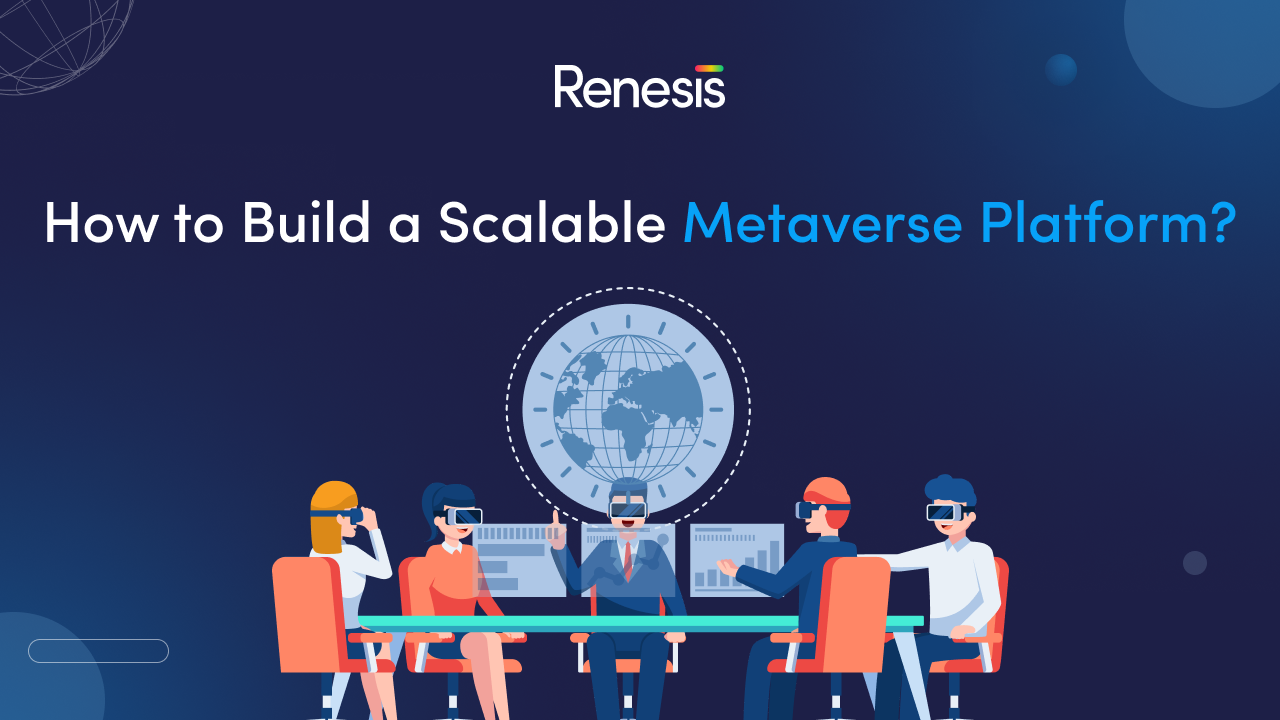How to Build a Scalable Metaverse Platform?
People have been dreaming of building a metaverse platform for a long time. Building a scalable metaverse platform can be a complex task, but with careful planning and execution, it is possible to create a platform that is both functional and user-friendly.
A metaverse platform is a virtual world that allows users to interact with each other and engage in various activities, from gaming to socializing. In order to build a scalable metaverse platform, there are several key considerations to keep in mind. In this blog, we’ll look at how to build a scalable metaverse platform?
Continue reading this blog!
Requirements for Building a Scalable Metaverse Platform
Before you can build a scalable Metaverse platform, you need to make sure your system meets the following requirements:
- Your system must be able to handle large volumes of transactions without any significant delays or hiccups.
- The system must be able to quickly and easily scale up or down as needed to accommodate fluctuating traffic loads.
- Your system must be secure and reliable, with robust anti-spam and anti-virus measures in place.
- The system must be easy to use, with a simple and intuitive interface that is easy for end users to navigate.
- Your system must be able to integrate with other systems and applications as needed.
Essential Resources to Build a Metaverse Platform
Building a metaverse platform requires several resources. You will need to have access to a development environment that can handle the complex graphics and physics of the virtual world, as well as hosting and server resources that can handle the load when your metaverse is up and running.
The most popular 3D creation tool is Unity, which is available for free or with a paid professional version depending on your requirements. You’ll also need a hosting service such as Amazon Web Services (AWS) or Google Cloud to host your world. For web services and APIs, you can choose from many different options including Firebase and Google Cloud Platform (GCP).
Finally, you’ll need a powerful server computer capable of handling the load of running the metaverse.
Key Components of Building a Scalable Metaverse Platform
Technical Infrastructure:
The technical infrastructure of the metaverse platform must be robust and scalable. This includes a high-performance network, data storage, and processing capabilities. It is important to choose the right hardware and software components to ensure the platform can handle large amounts of data and support many users.
Virtual Reality:
Virtual reality is a key component of the metaverse platform. To build a scalable platform, you must ensure that the virtual environment is well designed and optimized for performance. This includes the use of high-quality graphics, animations, and sound effects to create an immersive and engaging experience for users.
User Experience:
The user experience is critical to the success of the metaverse platform. To ensure that users have a positive experience, you must design the platform with ease of use in mind. This includes creating a simple and intuitive interface, providing access to a variety of virtual activities, and allowing users to easily interact with each other.
Content Creation:
Content creation is a key aspect of the metaverse platform. To build a scalable platform, you must make it easy for users to create and share content. This includes tools for creating virtual objects, environments, and animations, as well as tools for publishing and sharing content with other users.
Monetization:
Monetization is an important consideration when building a metaverse platform. To ensure that the platform is financially sustainable, you must consider various monetization models, such as virtual currency, subscriptions, or advertising.
By keeping these key considerations in mind, you can build a scalable metaverse platform that is both functional and user-friendly. By providing users with a rich and immersive virtual environment, you can create a platform that is both engaging and profitable.
Best Practices for Security and Performance When Building a Metaverse Platform
When building a scalable Metaverse platform, it is important to consider the security and performance of your platform. Security should be your top priority; this includes data security, application security, network security, and access control.
Make sure your environment is secure from external threats by implementing authentication and authorization measures such as two-factor authentication, encryption, firewalls, and monitoring. It’s also important to ensure that performance remains optimal by using caching mechanisms, reducing latency with technologies like CDNs, optimizing content delivery networks (CDNs), and reducing server response times.
Lastly, make sure to avoid single points of failure by using a system architecture that allows for multiple active nodes in order to avoid downtime. Following these best practices will help ensure the long-term success of your Metaverse platform.
Hire a Metaverse Company!
Entering the Metaverse can be a confusing experience for those new to the concept. Companies looking to join the field may wonder if there is a quicker path. The answer is yes – by partnering with a professional Metaverse company, you can receive guidance and assistance in taking your first steps into this virtual world.
We are the pioneers of immersive reality, so if you need help moving your business into the Metaverse, consider Renesis Tech!










